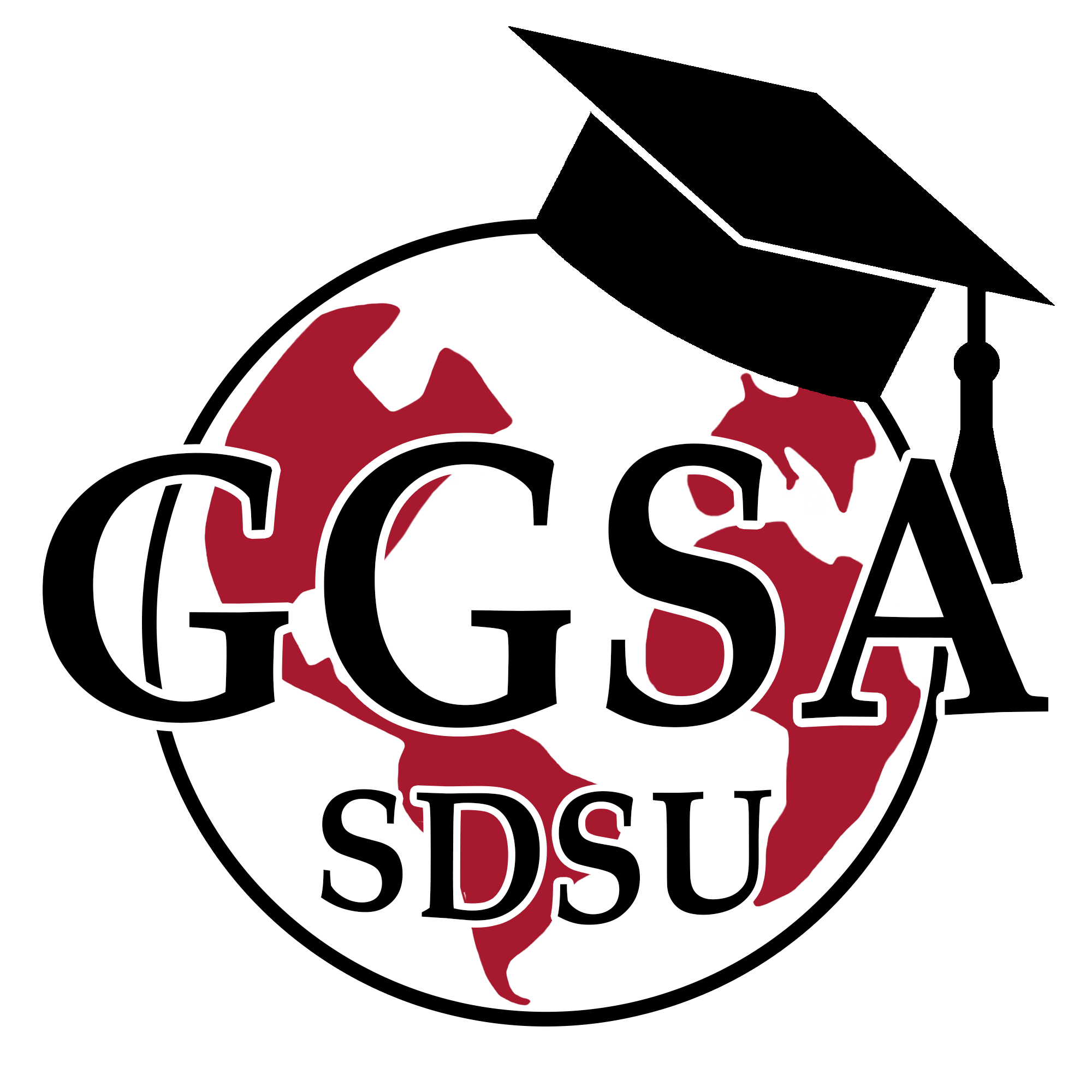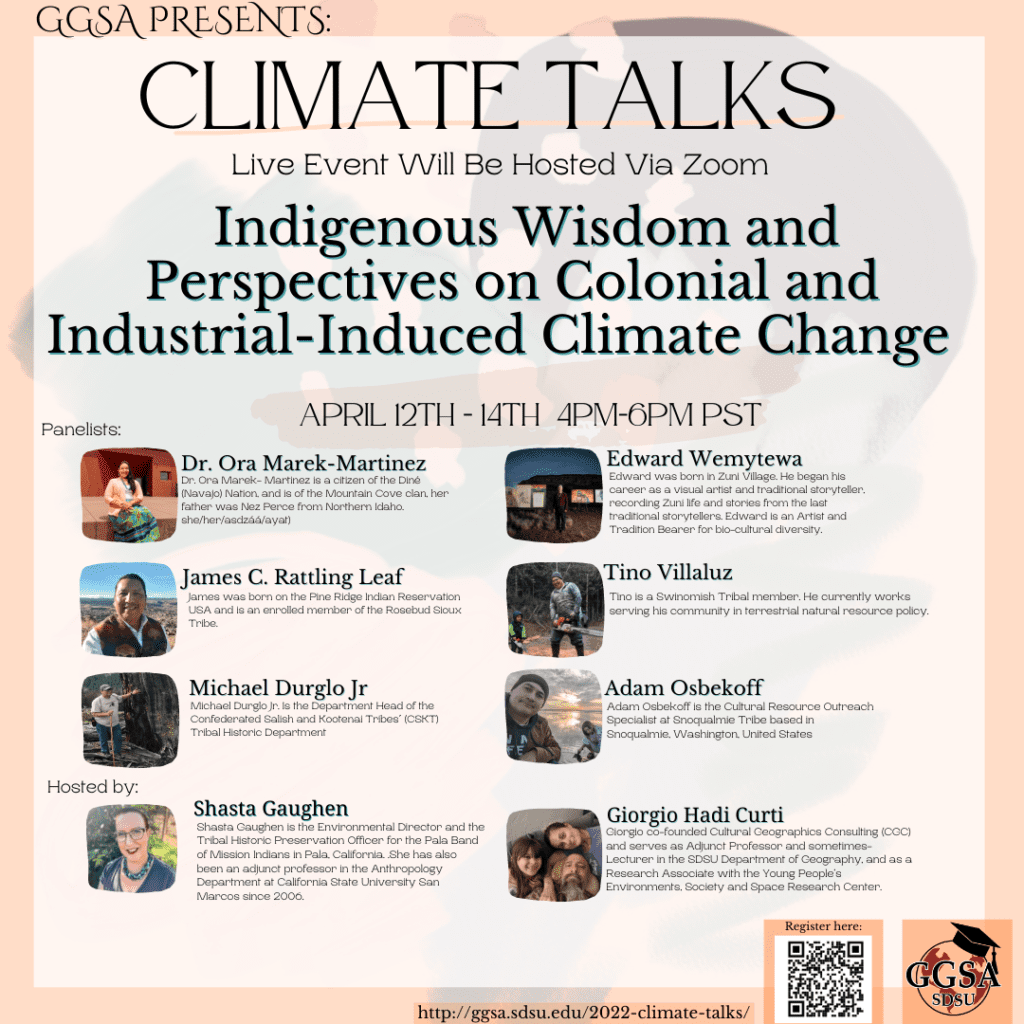
This student-led project, through the Geography Graduate Student Association (GGSA), occurred on April 12th, 13th, & 14th 2022. The Talks focused on bringing together Indigenous leaders and traditional practitioners to provide much-needed perspectives, practices, and wisdom–and the associated challenges Indigenous communities may be facing–related to colonial- and industrial-induced climate change. The purpose was twofold: (1) to provide a forum for Indigenous insights, concerns, and lessons to challenge blind-spots, errors, and exclusions of Western climate science, and (2) to present SDSU students, faculty, staff, alumni, and the wider public with opportunities to become worthy to responding to these challenges.
Watch the recordings from all three days & click on the link below to download our post-event newsletter!
Schedule
April 12th Tues.
4-6 PM PST via Zoom
Edward Wemytewa
Valentino Villaluz
April 13th Wed.
4-6 PM PST via Zoom
Dr. Ora Marek-Martinez
James Rattling Leaf
April 14th Thur.
4-6 PM PST via Zoom
Michael Durglo Jr.
Adam Osbekoff
GGSA Climate Talks 2022 Kumeyaay Land Acknowledgment
Since time immemorial, the Kumeyaay people—Ipai to the north, Tipai to the south, Kamia to the inland, and all of those who have used and continue to use the self-identifier, Diegueno, whether by active choice or colonial imposition—have been a part of the lands and waters we often call today, San Diego County.
These lands and waters have nourished, healed, protected, and been intimate and indelible parts of the familial and social of Kumeyaay for many, many generations—and continue to be today. With, in, of, and through these lands and waters, Kumeyaay have practiced familial and social relationships of stewardship, care, balance, and harmony—relational practices that live and support life always for the people.
What I have been taught by the Kumeyaay people with and for whom I work is that the depth and weight of what it means for an act, a thought, a song, a prayer, a method, an offering, an action, a practice to be for the people can only truly be glimpsed and loosely grasped when notions of “the person” and concepts of “the social” are opened up to relations and capacities that exist far before and far beyond dominant and dominating humancentric errors and blinders.
As members of the San Diego State University community and residents of the City and County of San Diego, it is imperative that those of us who are not Indigenous to these lands and waters recognize that we are contributing to a colonial-settler institution, that we are, ourselves, settlers in Indigenous Kumeyaay lands, and that more often than not we are directly implicated in promulgating, promoting, and perpetuating these dominant and dominating errors and blinders—whether passively or actively.
We must both acknowledge this legacy and ongoing presence of coloniality and take ownership of the fact that each one of us has a deep obligation and weighted responsibility to actively and productively work towards restorative geographical, historical, political, cognitive, legal, and social justice with and for Kumeyaay people—wherever, whenever, and however they deem appropriate.
It is thus essential that the language of land acknowledgements not be confused for the production of spaces for equitable and corrective action, or those of representational recognition mistaken for productive systemic change. If acknowledgements are to be meaningful they must be continually generative—therefore so, too, must they be accompanied by actionable institutional respect and operational structural inclusion—in perspective, policy, practice, and return—of the knowledge and political sovereignty of Kumeyaay people—and, indeed, all Native peoples—to all ancestral and familial lands and waters.
On January 20, 2021, President Biden issued Executive Order 13985 on Advancing Racial Equity and Support for Underserved Communities through the Federal Government. In response, Pueblo of Zuni Governor Val Panteah stated in a letter to the Biden-Harris Administration and Office of Management and Budget on July 1, 2021:
All lands and waters within and intersecting the borders and boundaries of the United States are Native lands and waters (see https://native-land.ca/). This basic fact must first formally be addressed, officially recognized, operationally accounted for, and serve as the basis of any honest and sincere effort at advancing equity and support for the underserved A:shiwi community and Pueblo of Zuni [and, indeed, all Native American Tribes and communities]. Recalling your own recent words this past June Mr. President, “Great nations don’t ignore their most painful moments. They don’t ignore those moments of the past. They embrace them. Great nations don’t walk away. We come to terms with the mistakes we made.”
These mistakes of colonial-settler nations are as deep as they are enduring, and as prevalent as they are dispossessing and alienating—globally and locally, yesterday and today. As Potawatomi scholar Kyle Whyte has explained, Colonial- and industrial-induced climate change is in fact just one intensive manifestation of environmental change born of colonial settler societies:
Thinking about climate injustice against Indigenous peoples is less about envisioning a new future and more like the experience of déjà vu. This is because climate injustice is part of a cyclical history situated within the larger struggle of anthropogenic environmental change catalysed by colonialism, industrialism and capitalism—not three unfortunately converging courses of history [Whyte 2016:16].
Flowing through the heart and enveloping the mind of colonial, industrial, and capitalistic actors and their values, perspectives, choices, politics, and practices driving climate change are what anthropologist Gregory Bateson identified almost exactly 50 years ago as “epistemological errors” of dominant—and dominating—Western systems of logic and value. Quoting Bateson:
[T]he last hundred years have demonstrated empirically that if an organism or aggregate of organisms sets to work with a focus on its own survival and thinks that that is the way to select its adaptive moves, its “progress” ends up with a destroyed environment. If the organism ends up destroying its environment, it has in fact destroyed itself [Bateson 1987 (1972):457].
And:
[Such] [e]pistemological error is all right, it’s fine, up to the point at which you create around your-self a universe in which that error becomes immanent in monstrous changes of the universe that you have created and now try to live in [Bateson 1972:485].
These epistemological errors inform and guide not only how we frame the possible futures that climate change may or may not bring, but limit what may be included of various pasts. Mathews and Barnes cover this topic in their introduction to an important special issue of the Journal of the Royal Anthropological Institute. They note:
[J]ust as states have sought to manipulate the past by celebrating some moments in history and silencing others, so, too, they have linked these selected pasts to particular futures. The question of the past, then, if looked at in the right way, has always also been a question about the future….
The future can be told as a story, calculated as a probability, or speculated upon as a form of potentially valuable risk…. The future … is not one but many, and those who create futures typically seek to narrow down what the future can be to a relatively limited subset of possible registers [Mathews and Barnes 2016:10-11].
I have been taught by Kumeeyaay and A:shiwi, ‘Atáaxum and Diné, Coast Salish and Chalá∙at, Lakotas and Dakotas that to truly acknowledge Indigenous lands and waters is also to always recognize, honor, and respect both the futures and pasts of non-human and more-than-human relations that have existed from the times of the beginning of the beginning or the beginning with no beginning; these are the relationships of the air and the winds; the mists and the clouds; the soils and the minerals; the animals and the plants; the stars and the constellations—what is below and what is above. This is the life of land and water. This is the capacitational life that colonial-and industrial-induced climate change monstrously effaces and eviscerates.
When promulgating, promoting, and perpetuating these errors driving climate change, our institutions become perverse—and when enabling these institutional and structural monstrosities—whether passively or actively—we ourselves become monstrous. The lesson then—if we are to become worthy to the challenges of these Climate Talks—is to begin to come to know how, from the deep-time and deep-space knowledges and wisdoms that formed and grew together with the lands and waters of what we often call today “the United States of America”, and which will be graciously shared with us over the next three days, to start to find pathways and build circuits for correctives to the epistemological errors driving our dominant modes of knowledge production—of pasts and futures; scientific, philosophical, economic, and otherwise—to become less monstrous in thought and action. You, the audience, are the future climate scientists. There are many more possibilities for inclusive, productive, balanced, collective, and generative pasts and futures out there for the people than what your algorithms, models, and projections commonly tell.
Get to know our moderators!
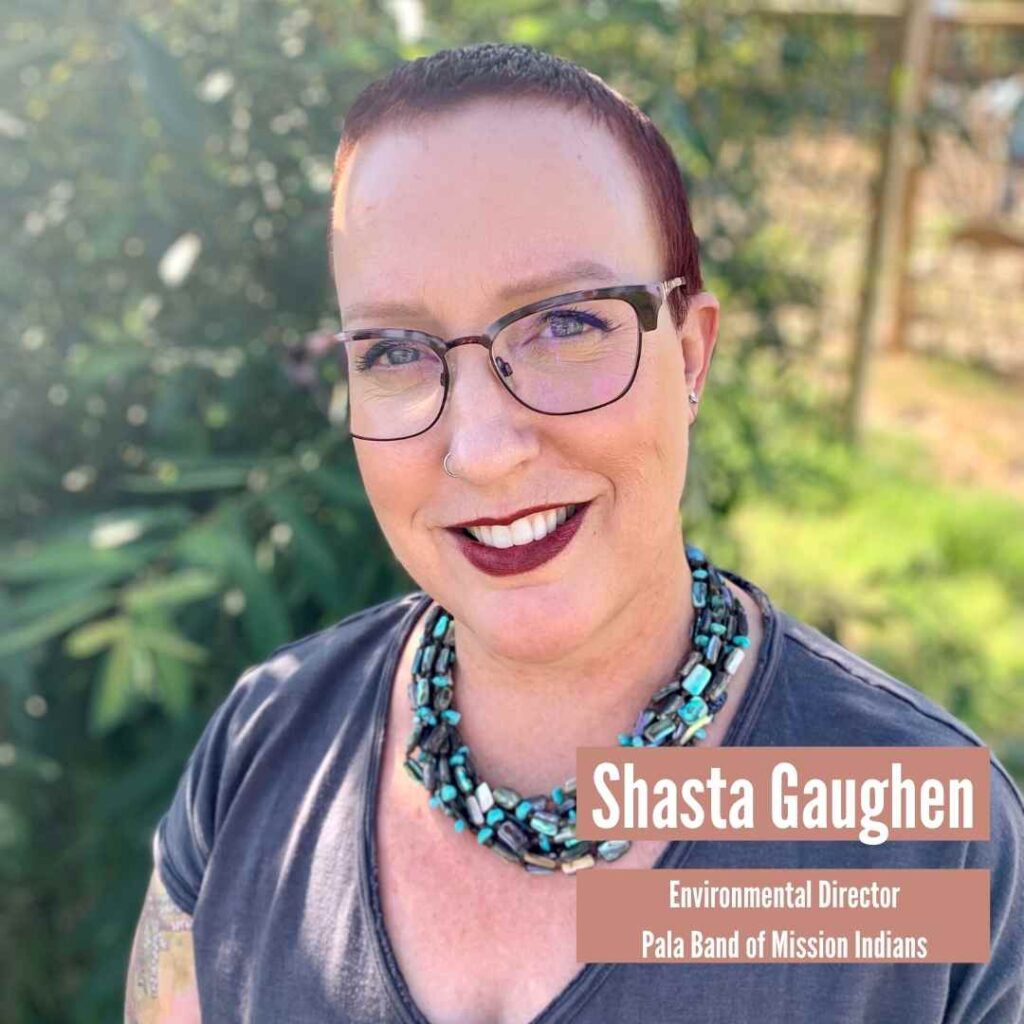
SHASTA GAUGHEN
Shasta Gaughen is the Environmental Director and the Tribal Historic Preservation Officer for the Pala Band of Mission Indians in Pala, California. She has worked for Pala since January 2005, and established Pala’s Tribal Historic Preservation Office in 2008. She has also been an adjunct professor in the Anthropology Department at California State University San Marcos since 2006. Dr. Gaughen received her PhD in Anthropology from the University of New Mexico. She is Chair of the National Association of Tribal Historic Preservation Officers, a member of the Advisory Council on Historic Preservation, Secretary of the Board for the Native American Environmental Protection Coalition, lead of the Tribal Working Group for the Climate Science Alliance, and a member of the Institute of Tribal Environmental Professionals’ Climate Change Advisory Committee. Dr. Gaughen oversees the Tribal Climate Health Project, a grant-funded education and outreach project that includes a website, resource clearinghouse, webinars, videos, and in-person presentations on climate change and health adaptation in Tribal communities.

Giorgio Hadi Curti
Giorgio is a socio-cultural geographer and critical ethnographer who works at the intersections of cultural and natural resources laws, traditional and local knowledges and sciences, and the collaborative development and implementation of land and water stewardship and management strategies guided and defined by Indigenous and traditional communities and associated human-environment relationships and worldview and value systems. Giorgio received his PhD in 2010 from the San Diego State University-University of California, Santa Barbara Geography Joint Doctoral Program. In 2016, Giorgio and friend and fellow SDSU-UCSB Joint Doctoral alum, Christopher Moreno, founded Cultural Geographics Consulting (CGC), a minority-owned small business that pursues ontological and epistemic justice in its dedicated mission to help create a world where historically and geographically marginalized peoples are empowered to define and direct their own futures. In addition to his work with CGC, Giorgio serves as Adjunct Professor and sometimes-Lecturer in the SDSU Department of Geography, and as a Research Associate with the Young People’s Environments, Society and Space Research Center.
Get to know our panelists!
Valentino Villaluz
Wildlife Program Manager, Swinomish Indian Tribal Community
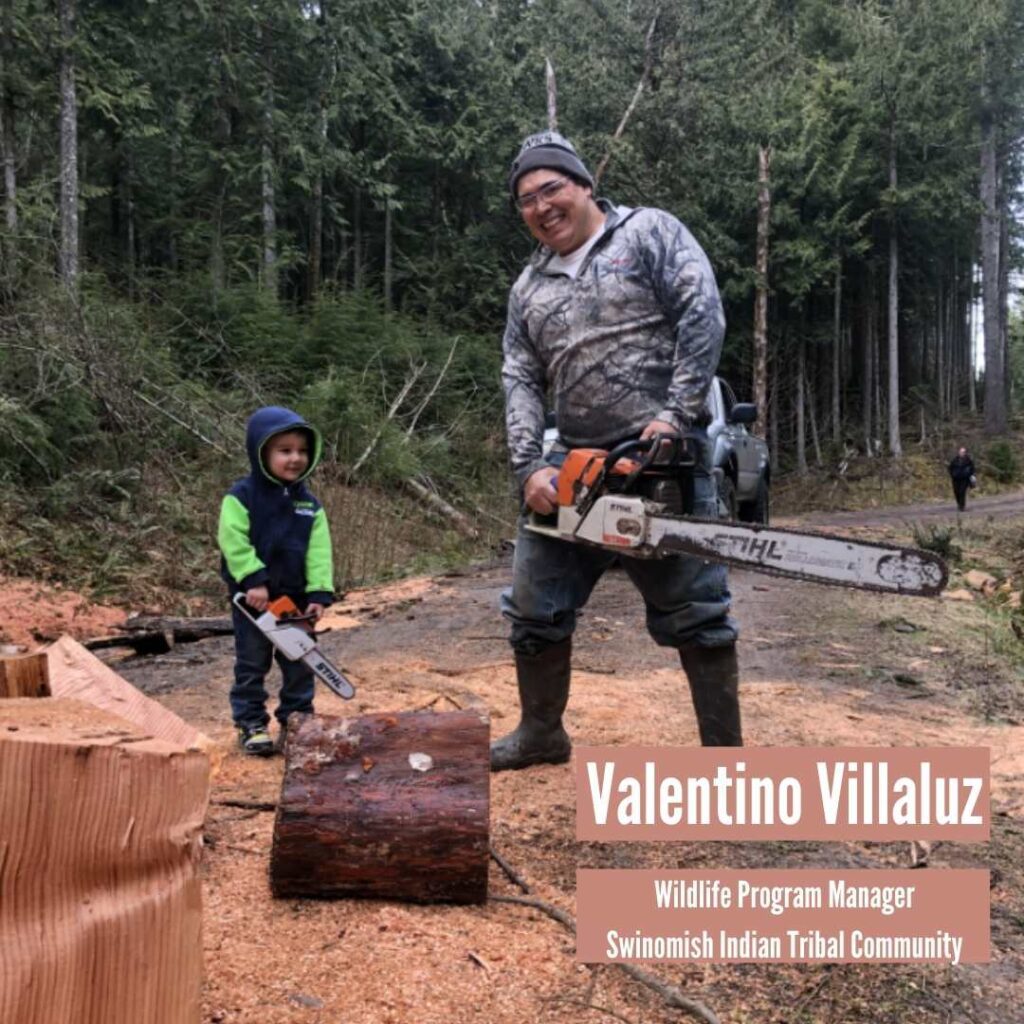


I am a Swinomish Tribal member. Lifelong practitioner of nature-based worship as well as one of the primary first foods providers for my community. I have been, and continue to be a student of my culture and heritage. I have no formal western education beyond high school. My career path has varied greatly ranging from the Bering sea to senior management in the casino industry, and now serving my community in a natural resources policy position mostly on the terrestrial side. My current service is one of accountability, reflection, and a future generational focus on natural(cultural) resources. I have spent the majority of my life trying to listen and not speak however have been transitioning into a speaking role being mentored by a cultural leader and father figure Chester Cayou. When I’m not in meetings or bound to the office I own and operate a treaty fishing and crabbing boat for both subsistence and economics.
The photos are me taking a work meeting while on the Salish sea, cutting wood for elders and crabbing with my daughter
Edward Wemytewa
Artist & Tradition Bearer for Biocultural Diversity
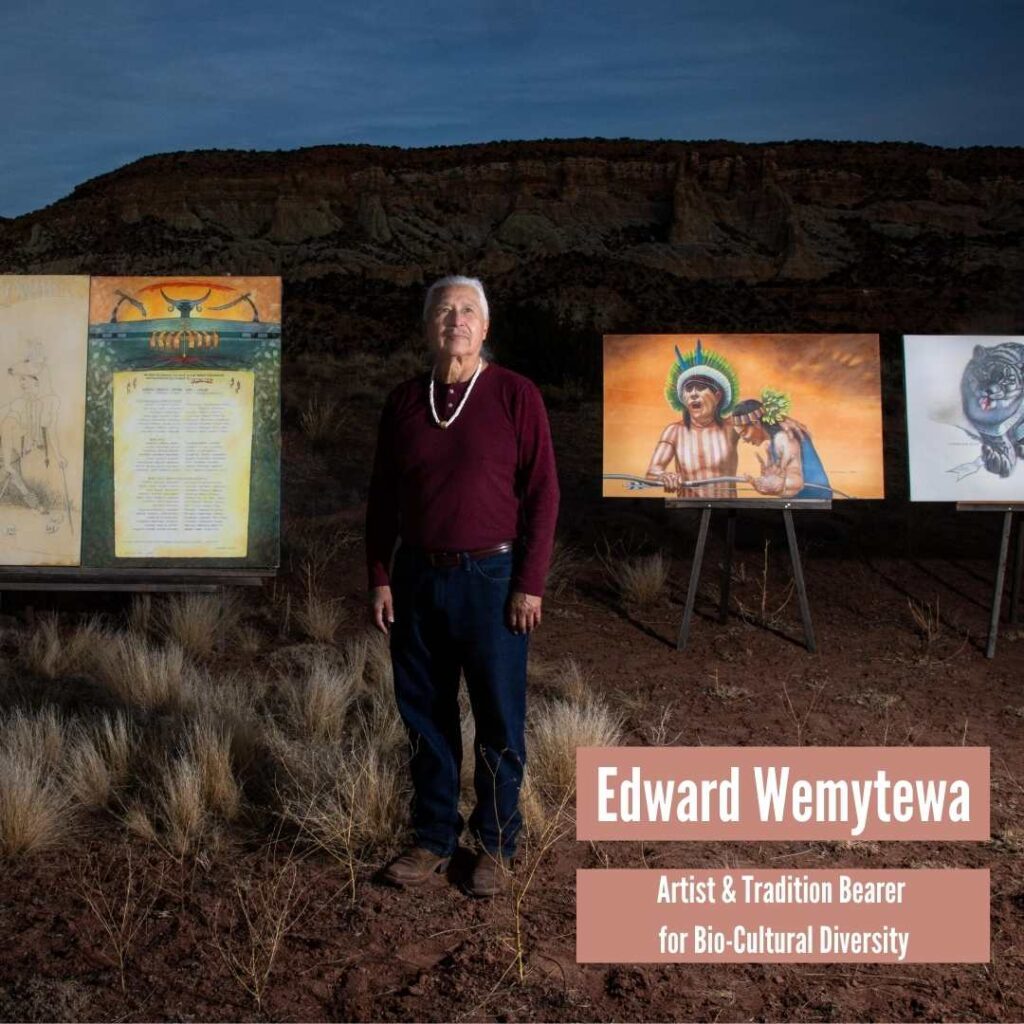
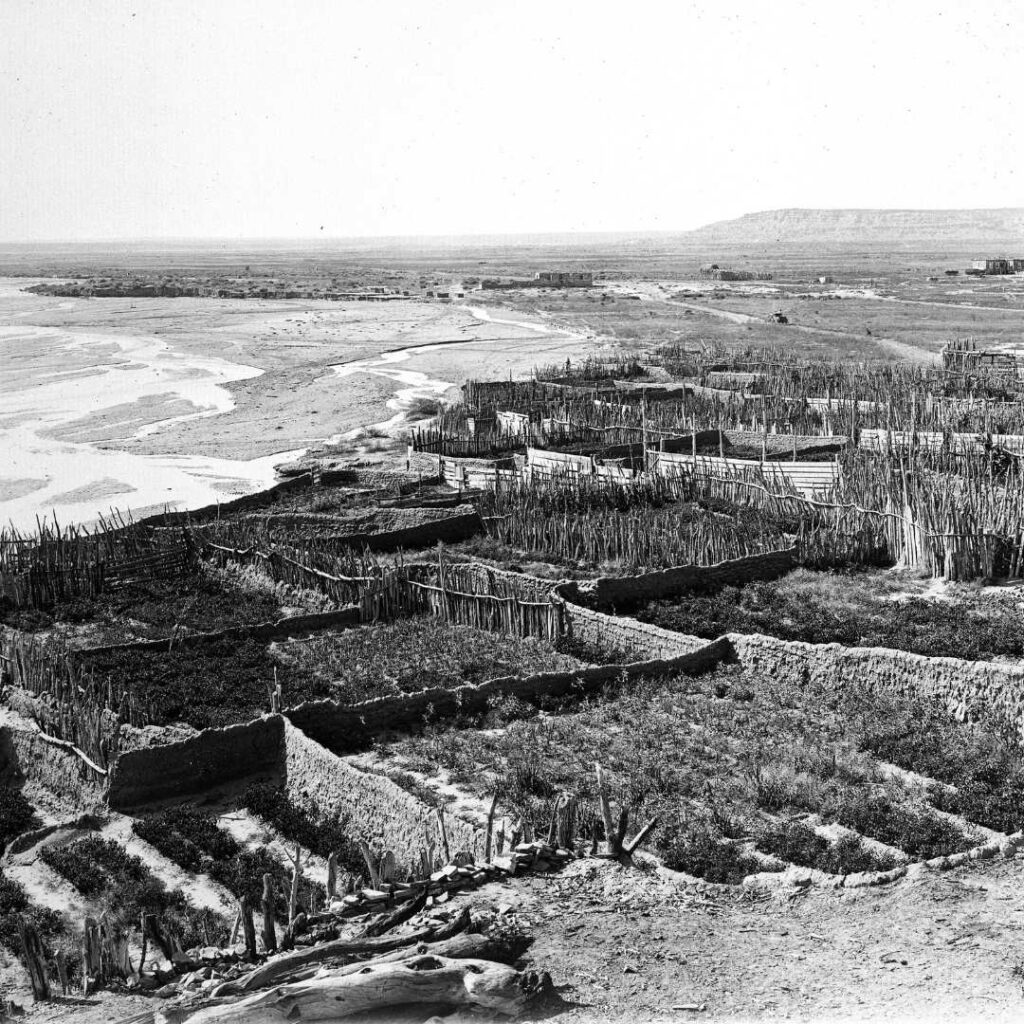
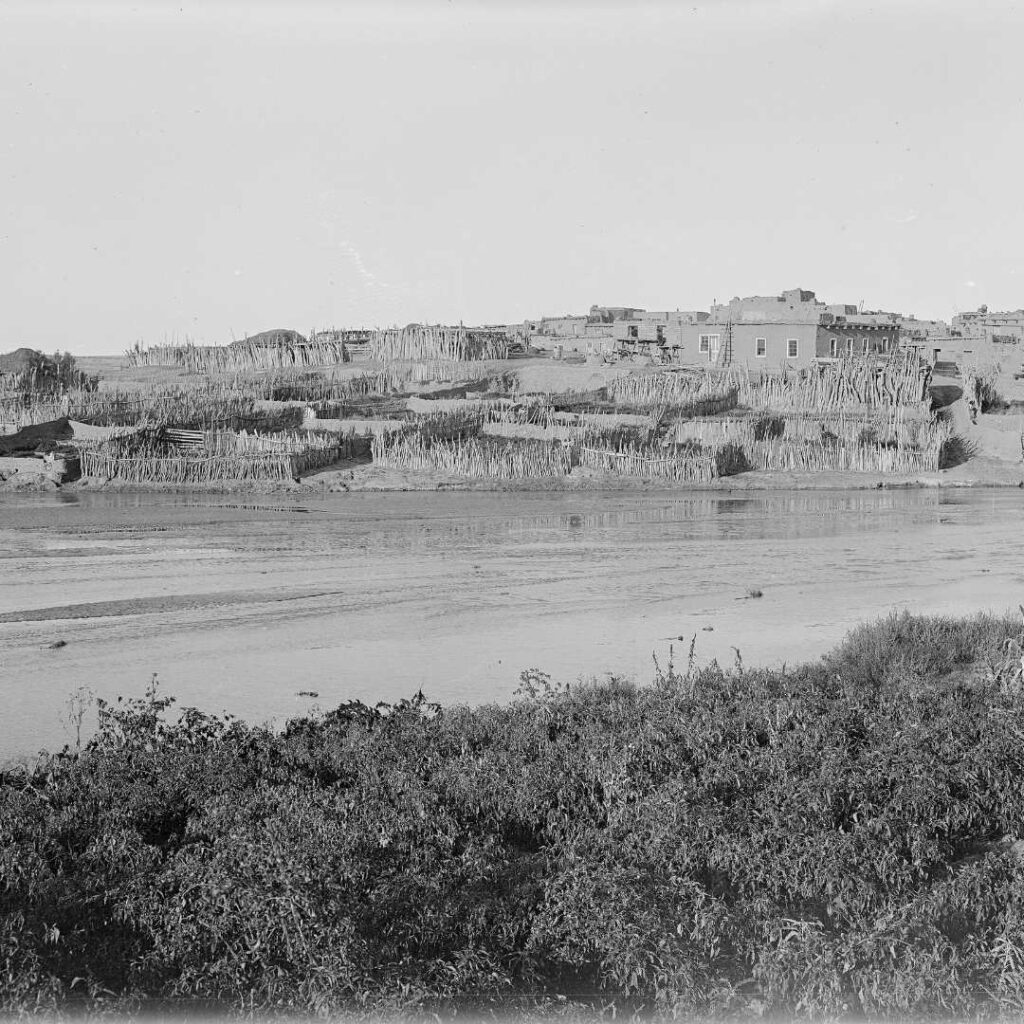

Description of photos: I am posing with the “Anthropocene” mural, 2) two slides of the Zuni River [Circa 1879; Credit the Smithsonian archives for the old photographs], and 3) a “cultural map of the immediate Zuni waterways” in New Mexico and Arizona. Of course, the waterways are dead, save for the few wetland sites and groundwater.
Biography:
I was born in Zuni Village, clans are “Tobacco” and “Child of Crow,” whose first language is Shiwi’ma: bena:we. I began my career as a visual artist and traditional storyteller, recording Zuni life and stories from the last traditional storytellers. In 1995, I founded the Idiwanan An Chawe (Children of the Middle Earth) Theatre, where my art evolved with the contemporary issues facing the Zuni People.
Our ancestors come from the Grand Canyon, settling in eastern Arizona/western New Mexico. Our stories from our cultural heritage speak about our roots that connect us to a place called “The Place of Everlasting Summer,” or “Olo’ik’yana Łimn’a,” a place in Mexico.
As a tribal councilman, elected two terms, beginning in 2001, my priority was fighting to protect water in Arizona and New Mexico. The Zuni River, which once flowed through our village has died. From 1998 through 2003, I sat through many hours of Water Rights negotiations and traveled to Washington DC on related matters.
Raising Indigenous Consciousness through Art 2013-2020
Art has been my passion and life. The process of “creating art” feeds my spirit, affirms my place “of being”. In the past 9 years, art has been a vehicle for raising my Indigenous voice in a larger Indigenous movement to address climate change. The Indigenous movement, for example, like “Standing Rock” in 2016 was out there. A lot of action and voices were raised, and then the COVID-19 Pandemic hit, as never been seen within our generation. Everything came to a sudden stop. So, in retrospect, it seemed my art was on the run compared to when the international community came to a scratching halt due to the pandemic. Two years ago, in April of 2020, I released a video of my art called “Art on the Run.” It captures an aspect of the Indigenous movement through an artistic lens. The video gives a glimpse of some of the pieces of art featured in an art installation, which provides for layers of voices, primarily about “Anthropocene,” that good weather is over.
Tradition Bearer for Bio-Cultural Diversity
As a Tradition Bearer, my hope is that in converging on an “obscure landscape” in the new millennium that through a conversation between Science and Philosophy provides for inclusion of Indigenous thought and cultural practice protections find its way into nation/state policies.
Indigenous Ceremony is not far removed from science. One example is in the pilgrimages to sacred sites and associated with it is the practice of collecting plant and animal “specimens,” which are then taken to the village to show as a “testament” of the state of the sacred site. In the past one hundred years this has been critical in determining the health of, or lack of, an ecological balance at Kołuwal’a, Zuni Heaven, the confluence of the Zuni River and the Little Colorado River, in Arizona. Another example is in the imagery created by the telling of a timeless prayer, which describes poetically the blossoming of the Water Cycle.
Though the A:shiwi (Zuni) have such knowledge to its natural environment, in one court case, I witnessed an arrogant attorney on the opposing side, frustrated with Zuni’s position on water rights, touted that the Zunis knew nothing about aquifers. Our attorney, an Indigenous woman herself, eloquently and firmly stated to him saying, “Zunis know everything about aquifers. They hold aquifers sacred”. We are a part of the NATURAL WORLD and its NATURAL LAWS.
Just prior to my trip to Tlaxcala, Mexico, in July 2017, I was contacted by the Zuni Cultural Resources Enterprise regarding damage to a Zuni Ancestral site named Amity Pueblo. At least 14 human remains were desecrated. Subsequently, the Arizona State Game and Fish (AZG&F) contacted me per email and set a date for my interviewed regarding the desecration and that my interview would become a part of a training video produced through the AZG&F. The Amity Pueblo—A Cultural Sensitivity Training Video was being produced for the agencies so they could work better together in the future. I was actually looking forward to the interview until a short time later when I saw the desecration of an ancient pyramid, which was supposedly built to honor Xicotencatl’s father at Tizatlan. Tizatlan is in the State of Tlaxcala, located east of Mexico City, and on top of a prominent hill where the vista was gorgeous. Looking southwesterly from the hill top one could see the active volcano called Popocatepetl, and the associated chain of mountains–Istacihuatl (the White Woman), La Malinche (Daughter of Cuauhtemoc/also Nahuatl name: “Matlalcueye,” meaning “Blue Skirt”), and Cuatlapango (Decapitated Head). The Tlaxacaltec temple was decapitated and a Catholic church named Capias Abierta, was constructed in its place using the very stone that embodied the pyramid’s crown. Returning from Mexico City, I emailed my contact at the AZG&F telling them I changed my mind. As of January 2020, the Amity Pueblo education video had been pending completion.
Today, nationally the Indigenous Peoples—from activists to tribal nations, to educational institutions, to state and federal agents, even the rare politicians (Indigenous and non-Indigenous)—are openly standing up on behalf of their Indigenous constituents. It is imperative that we, along with our allies push for laws protecting the Rights of Indigenous Peoples internationally and at Nation/State levels. Indigenous Peoples in the United States are central in re-defining a meaningful America and in protecting Earth Mother. Mni Wichoni, Agua es Vida, Water is Life.
Dr. Ora Marek-Martinez
Director , Native American Cultural Center
Assistant Professor, Anthropology

Dr. Ora Marek-Martinez (she/her/asdzáá/ayat) is a citizen of the Diné (Navajo) Nation, and is of the Mountain Cove clan; her father was Nez Perce from Northern Idaho. As the Director of the Native American Cultural Center, Ora’s work includes supporting and ensuring the success of Northern Arizona University Native American and Indigenous students through Indigenized programming and services to meet the unique needs of our students. As an Assistant Professor in the Northern Arizona University Anthropology Department, her research interests include Indigenous archaeology and Indigenous Heritage management, including research and approaches that utilize ancestral knowledge and storytelling in the creation of archaeological knowledge. Other research interests include southwestern archaeology, Indigenous futurisms, and decolonizing and Indigenizing archaeological narratives of the cultural landscape on Indigenous homelands as a way to reaffirm Indigenous connections to land and place. Her current research focuses on a Flagstaff Indigenous Heritage Trail project, and an ethnographic research project on Indigenous archaeology that will contribute to the efforts in our discipline to move archaeology beyond its colonial origin. Dr. Marek-Martinez is also a founding member of the Indigenous Archaeology Coalition.
Links:
- NAU Profile: https://directory.nau.edu/person/ovm
- Twitter: @DocMarek
James Rattling Leaf
Research Associate, University of Colorado-Boulder
Co-Principal Investigator, North Central Climate Adaptation Science Center

Currently, James is a Research Associate at the Cooperative Institute Research Environmental Sciences, University of Colorado-Boulder as well a Co-Principal Investigator, North Central Climate Adaptation Science Center. He specializes in developing programs that utilize the interface between Indigenous People’s Traditional Knowledge and Western Science. He has over 25 years’ experience serving as a cross cultural/broker resource to Federal Government, Higher Education Institutions and Non-Profits to developing, maintaining positive on-going working relationships with federally and non-federally recognized Indian tribes, Tribal College and Universities and Tribal Communities.
He was born on the Pine Ridge Indian Reservation USA and is an enrolled member of the Rosebud Sioux Tribe.
Michael Durglo Jr.
Tribal Historic Preservation Department Head

Michael Durglo Jr serves as the Tribal Historic Preservation Department Head and has been a leader in climate change work for over a decade. He facilitated the development of a Flathead Reservation Climate Change Strategic Plan for the Confederated Salish Kootenai Tribes (CSKT). He shares his experience and knowledge of climate adaptation planning at workshops and seminars throughout the US and Canada. After completing the plan, he continued to build on the work by diving deep into the perspectives of the elders and integrating traditional knowledge into the plan.
In 2016, Michael received the White House Champion of Change award, in 2017; He received the Climate Leadership Award for Natural Resources.
Adam Osbekoff
Department of Archaeology and Historic Preservation (DAHP)
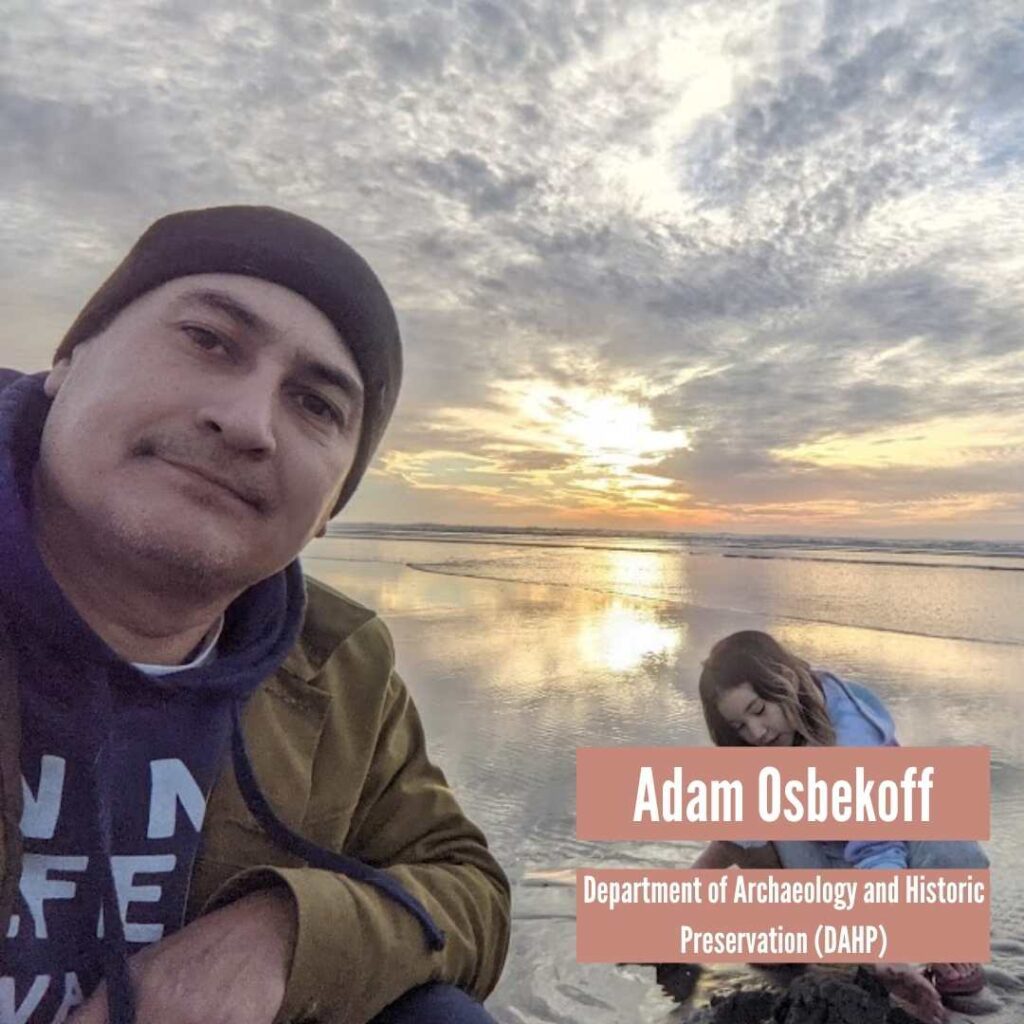
Adam has a bachelor of arts in Sustainable Community Development with an emphasis on Tribal Governance. He studied for a Master’s of Public Administration in Tribal Administration. He has worked in Cultural Resource Preservation for about 13 years and prior to that, he worked in various environmental roles for a local Tribe in Washington State.
A special shout-out to our planning team (pictured below) for putting this event together! Also Giorgio Hadi Curti & Shasta Gaughen for their feedback throughout this process. This event is funded by the San Diego State University Student Success Fee.
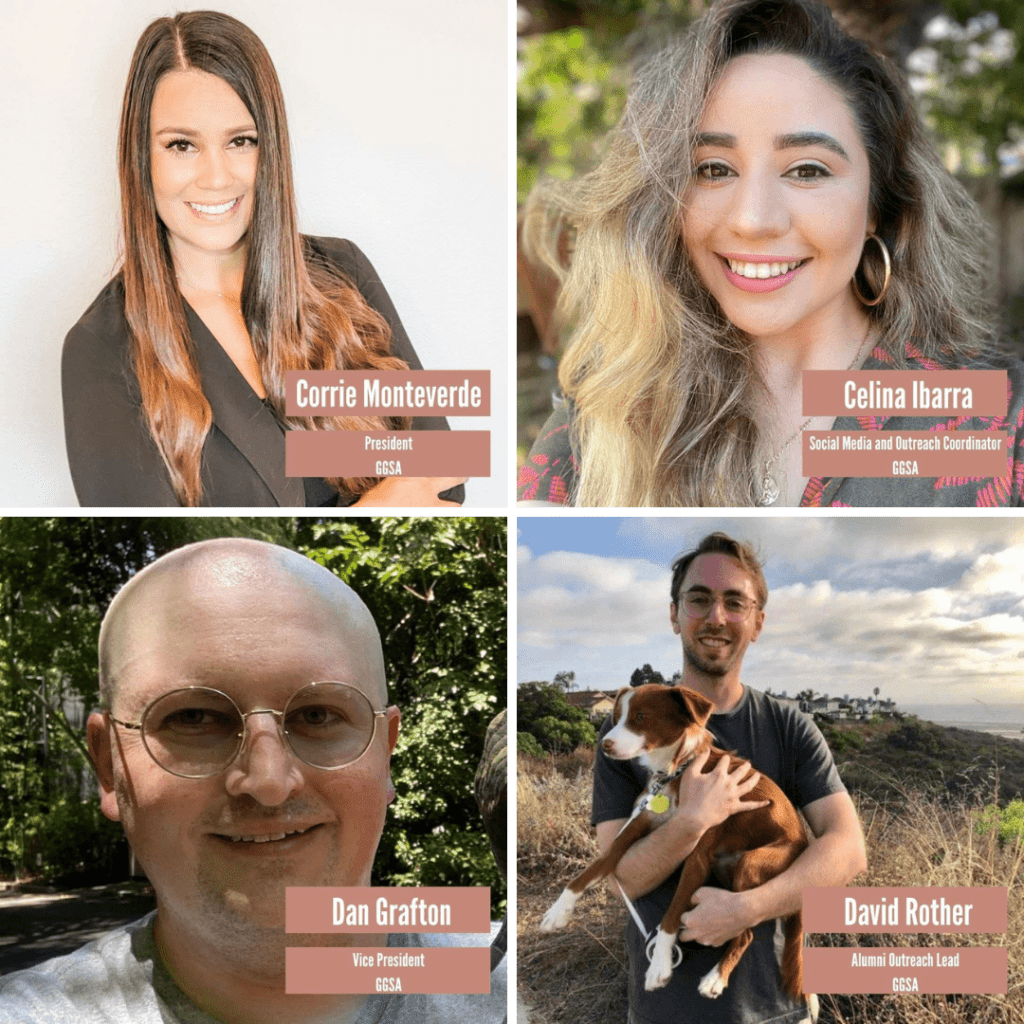
Questions? Email Corrie Monteverde at cmonteverde@sdsu.edu or leave a comment in our ‘Contact Us’ tab.
